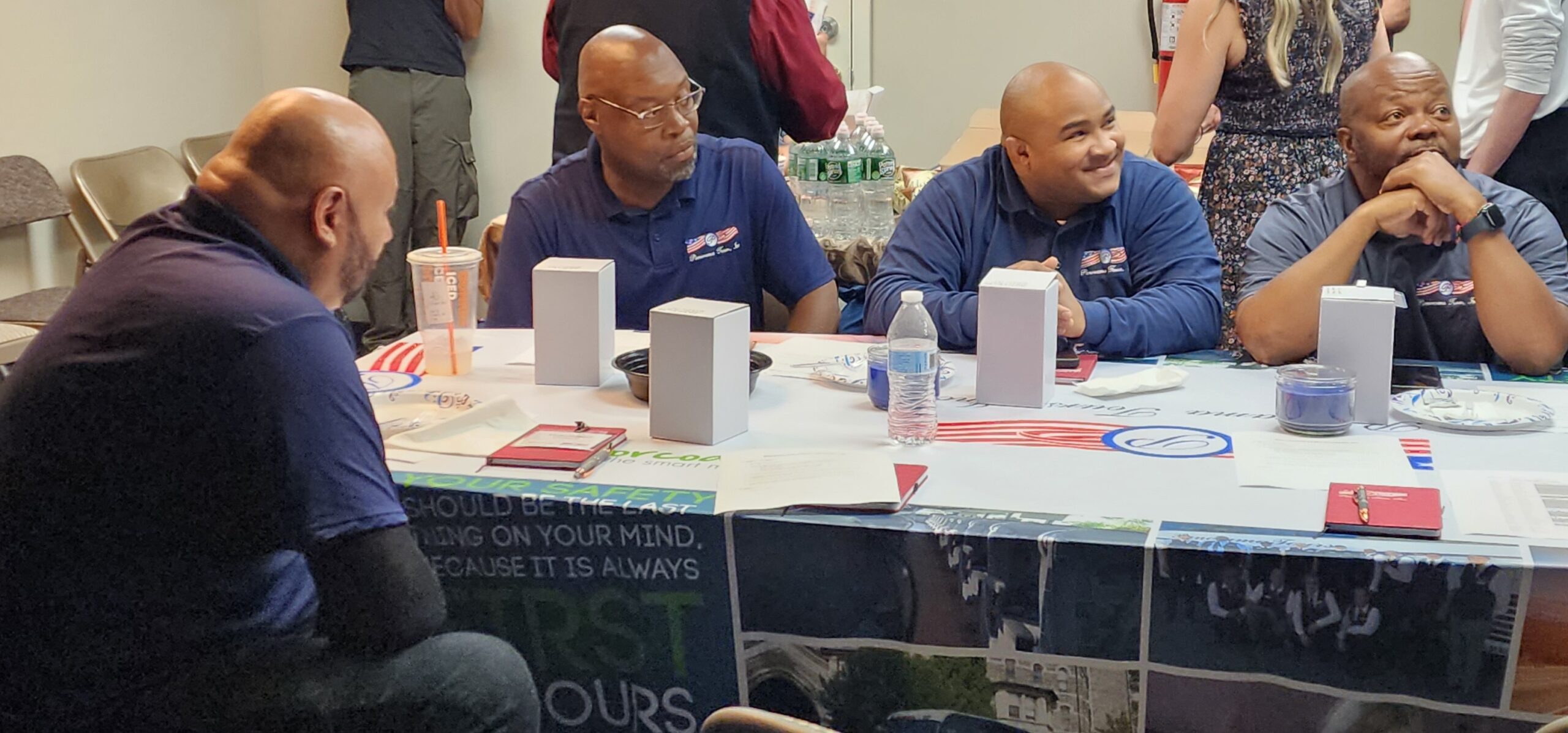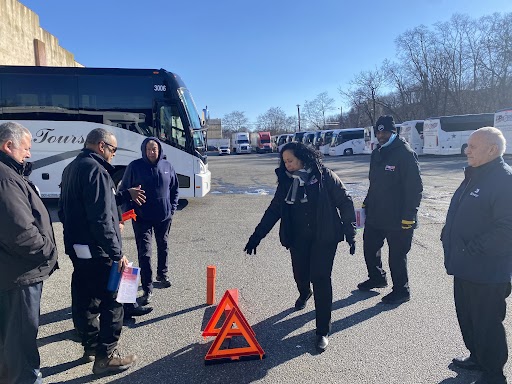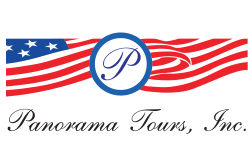
Behind the Scenes: How We Ensure Your Maximum Safety on Every Charter Bus Trip
When you board a charter bus for a group outing, the last thing on your mind is probably the complex web of safety protocols ensuring your comfort and protection. Behind every smooth journey lies a carefully orchestrated set of safety procedures, from vehicle maintenance to driver training. These elements work together to deliver not just a convenient ride, but also a safe and secure travel experience.
In this article, we’ll take you behind the scenes and explore what goes into ensuring maximum safety on every charter bus trip.

1. Comprehensive Driver Training and Certification
Charter bus safety begins with the driver. A bus driver’s knowledge of their vehicle, on the road experience, and continuous training are crucial factors in ensuring passenger safety. Driving a large vehicle like a bus requires more than just a commercial driver’s license (CDL).
Driver Certification
Every charter bus driver is required to possess a CDL with a passenger endorsement. This ensures that they are legally permitted to transport passengers and are knowledgeable about the rules and regulations that apply to large vehicles. Drivers are also subject to periodical health physicals to obtain a medical certificate that ensures they are physically capable of performing their duties.
Ongoing Training
In addition to meeting these requirements, drivers must also engage in continuous education on the latest safety protocols. Whether it’s learning how to handle inclement weather conditions or mastering the latest GPS technology for smoother navigation, ongoing training ensures that drivers are fully equipped to manage any potential challenges.
2. Routine Bus Maintenance and Inspections
A well-maintained bus is a safe bus. Charter buses undergo frequent inspections and maintenance to ensure they’re in top condition for every trip.
Pre-Trip Inspections
Before each journey, buses go through a comprehensive pre-trip inspection. This includes checking tires, brakes, fluid levels, lights, and emergency equipment such as fire extinguishers and first aid kits. Any minor issue is addressed immediately to ensure there’s no risk to passenger safety.
Long-Term Maintenance
Regular, in-depth inspections are performed by certified mechanics at regular intervals to prevent mechanical failures. These inspections examine critical components like the engine, transmission, and braking systems to ensure they are functioning correctly. The buses also receive regular cleaning and sanitization, particularly in light of recent global health concerns, to provide passengers with a clean and hygienic environment.
3. State-of-the-Art Safety Equipment
Charter buses today are equipped with advanced safety technology designed to protect passengers in various situations.
Seat Belts
While seat belts are often associated with personal vehicles, many modern charter buses come equipped with seat belts for added safety. Passengers are encouraged to buckle up during their journey, especially when the bus is traveling at high speeds on highways.
Surveillance Cameras
To enhance security on board, many buses are equipped with surveillance cameras that monitor the interior. This allows drivers and security personnel to respond swiftly to any incidents or suspicious behavior, ensuring passengers’ safety.
Electronic Stability Control
Modern buses feature electronic stability control (ESC) systems, which help prevent rollovers and skids in difficult driving conditions. The system detects loss of steering control and automatically applies brakes to individual wheels to keep the bus on its intended path.
4. Route Planning and Safety Assessments
The journey itself is carefully planned to ensure safety at every stage. Professional charter bus services invest considerable effort into mapping out routes that are safe and efficient.
Safety Assessments of Routes
Before embarking on a trip, the safety of each route is assessed based on factors such as road conditions, traffic patterns, and weather forecasts. This preemptive analysis helps mitigate risks and ensures that the bus will take the safest path to its destination.
GPS and Real-Time Tracking
Charter buses are equipped with GPS systems that provide real-time updates. This helps drivers avoid hazardous road conditions, traffic jams, or construction zones that could cause delays or accidents. The real-time tracking also enables the company’s dispatch center to monitor the bus’s location and communicate with the driver in case of an emergency.
5. Passenger Safety Protocols
While much of the focus is on the bus itself and the driver, passengers also play a role in ensuring a safe trip. Charter companies, like Panorama Bus Tours, provide clear guidelines for passengers to follow.
Emergency Procedures
In the event of an emergency, it’s essential that passengers know what to do. Panorama Bus Tours provides a safety briefing before every trip, explaining emergency exits, location of first aid kits, and what to do in case of an accident. Clear signage on buses also helps guide passengers to safety if needed.
Health and Safety Guidelines
Especially post-pandemic, health and safety guidelines have become more stringent. Passengers are encouraged to wear masks, if necessary, use hand sanitizers (provided on board), and maintain cleanliness during their journey. In some cases, buses may have additional air filtration systems installed to ensure good air quality during the trip.
6. Constant Communication and Monitoring
Behind the scenes, the operations team plays a critical role in ensuring safety by staying in constant communication with drivers.
Dispatch and Communication
Charter bus companies employ skilled dispatchers who remain in direct communication with drivers throughout each journey. If any issues arise on the road, such as bad weather or road closures, the dispatcher can provide real-time updates to help the driver adjust the route or take necessary precautions.
Monitoring Weather and Road Conditions
Weather can be unpredictable, but modern technology allows bus companies to stay ahead of changing conditions. By monitoring weather forecasts and road alerts, charter services can ensure drivers are prepared to handle anything from sudden storms to slippery roads.
7. Strict Adherence to Regulations
Charter bus companies operate under strict safety regulations imposed by local and federal transportation agencies. Panorama Bus Tours adheres to all rules set by the Department of Transportation (DOT) and the Federal Motor Carrier Safety Administration (FMCSA). This includes limits on driving hours to prevent driver fatigue, as well as regulations surrounding bus maintenance and passenger safety.
At Panorama Bus Tours, your safety is our top priority. From comprehensive driver training to state-of-the-art safety features and meticulous maintenance, we go above and beyond to ensure every journey is as safe as it is comfortable.
Ready to plan your next adventure? Give us a call at 973-470-9700 to book your safe and secure charter bus trip!

